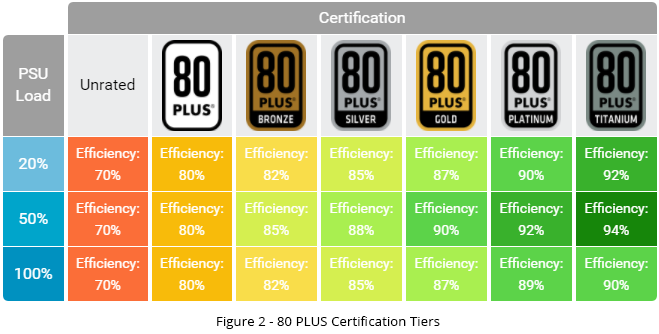Computer Power Shopping Guide, Buying The Right Power Supply Can Greatly Improve The Health And Performance Of Your Components
Computer power may be one of the components that is less important to users. However, if you are planning to buy power for your computer, let’s talk about the important features of power in the following power buying guide.
Perhaps computer power is one of the components that gets less attention when shutting down a computer. In fact, most users will probably spend a lot of money first to buy the most professional and powerful processor, graphics card, motherboard and other components, but they do not pay much attention to the power that supplies these components.
The point is, buying the right power supply can greatly improve the health and performance of your components. Therefore, in this article, we will examine the features that we should pay attention to when buying power, and we will provide a guide to buying a computer power.
How many watts of power do we need?
Power output power is expressed in watts, which indicates the maximum power that the power supply can provide. Current power supplies in the market are usually between 200 and 2000 watts.
To determine the amount of watts that the power supply needs to provide, you need to calculate the power (or TDP) that each of the current components on the system and the components you are likely to add to the computer in the future, and finally buy power that exceeds power. You need to be able to upgrade the system without having to change the power.
For example, if the total power required for the system is 500 watts, go for a power supply of 850 watts .
To calculate the minimum required power of the system, you can use tools such as free calculator Cooler Master, Outervision or its Persian version, Green.
Power connectors
All components inside a computer case require power, which is received directly or indirectly. Components that consume direct power are virtually connected to the power supply.
It is important to pay attention to the power connectors because sometimes the old power supplies do not support the new sockets. Of all the sockets, the most important is to pay attention to the power connectors of the graphics card and the motherboard.
Regarding motherboard connectors, we encounter two types of 4 + 20 and 20. The 4 + 20 connector represents a connector that can be 20 or converted into a 24-pin connector by connecting an additional 4 pins. The important point is that new motherboards have a 24-pin connector.
For graphics card connectors, if you work with very poor graphics cards, you do not need a power connector and the power received from the PCI Express slot is sufficient.
However, if you are using a professional graphics card in your system, you should know that you need one or two 6 or 8 pin power connectors, although most of these connectors are installed in the form of 2 + 6.
You also need Molex and SATA connectors to connect SSDs and HDDs, optical drives, etc. In the image below you can see the appearance of the connectors.

Efficiency and effectiveness
The power receives the AC current and converts it to DC current. Efficiency now determines what percentage of the input power is given to the system and how much of it is wasted. We set the efficiency with the 80Plus standard for power, which determines the power efficiency according to the table below.

Cabling type; Modular, semi-modular and non-modular
This feature basically shows how capable you are of managing cabling. In modular power supplies you can use only the cables you need and do not even take the rest of the cables out of the box.
Full-modular power supplies, thanks to this type of cabling, make it unnecessary to connect additional wires and ultimately have a cleaner, tidier case.
Semi-modular power supplies are almost similar to full-modular power supplies, except that it is not possible to disconnect the motherboard power cord from the power supply.
On the other hand, there are non-modular power supplies that have all the output cables fixed in the body, and even if you do not need a cable, you have to carry it with the power supply.
In the meantime, it should be noted that the use of full modular power supplies is a good option for professional users, but it confuses ordinary users due to the socket for connecting power and connecting parts.
Non-modular power supplies are a better choice for ordinary and novice users. It should also be noted that full modular power supplies are more expensive than non-modular paddles.













